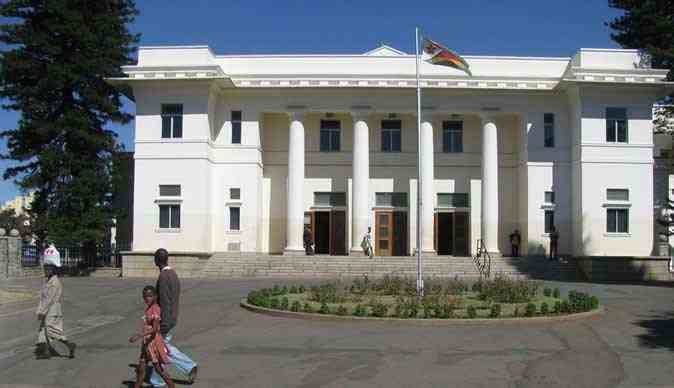
CHILDREN’S rights are fundamental principles that safeguard the well-being, protection, and development of children across the globe.
Children’s rights to survival, development, protection, and participation are the four main pillars of the United Nations Convention on the Rights of the Child (UNCRC), an international agreement that recognises children as human beings with inherent dignity and worth.
However, when considering the complex landscape of children’s rights, it becomes evident that certain rights hold more significance and are given greater attention and investment than others.
While all children’s rights are important, the significance of participation rights is often understated and underrepresented. A wise man once said: “We do not inherit the earth from our ancestors, but we borrow it from our children.”
While spoken in the very specific context of the physical environment and its preservation for future generations, this statement applies more holistically to decisions that we make today and how they affect our children in the future.
And yet, there is a firm belief that it is the exclusive responsibility of adults to make those decisions, as is the case with survival, development and protection rights, and children have no place in it.
Understanding children’s rights
Annually, on November 20, the world commemorates World Children’s Day to mark the anniversary of the UNCRC, which was adopted by the UN General Assembly 34 years ago on November 20, 1989.
- Chamisa under fire over US$120K donation
- Mavhunga puts DeMbare into Chibuku quarterfinals
- Pension funds bet on Cabora Bassa oilfields
- Councils defy govt fire tender directive
Keep Reading
The rights that are provided for in the UNCRC encompass a broad range of fundamental entitlements aimed at ensuring children’s survival, development, protection and participation.
These rights include, but are not limited to, the rights to education, healthcare, protection from abuse, and the right to be heard and participate in decisions affecting their lives.
The right to participation means that children have the right to express their views and opinions, and to be heard and involved in matters that affect them.
The government has the responsibility to respect children’s voices and choices, and to enable them to take part in decision-making processes at different levels, according to their age and maturity.
Participation rights grant children the opportunity to express their opinions, be heard, and actively engage in matters concerning their lives.
These rights empower children, foster their self-esteem and enable them to develop decision-making skills, critical thinking and empathy.
By involving children in decision-making processes, their perspectives are taken into account, leading to more inclusive and effective outcomes.
Zimbabwe is a signatory of the UNCRC and has, in fact, made some strides towards domesticating its provisions in the legislation of the country.
The Constitution of Zimbabwe Amendment (No 20) of 2013, which is the supreme law of the land, has recognised children’s rights. They are well-articulated in sections 19 and 81.
In fact, under section 81 sub-section (1a), every child has the right to equal treatment before the law, including the right to be heard.
This resonates with this years theme for World Children’s Day, For every child, every right, and moreso with the paramount importance of participation rights.
This means that no child should be left behind in terms of accessing each and every right that is afforded to them, including the right to participate in decisions that affect their lives and being heard.
Recognising and promoting participation rights has numerous positive impacts on the lives of children.
Extract from Constitution of Zimbabwe section 81
Under-representation of Participation Rights
Despite the recognition of participation rights within the UNCRC and the Constitution of Zimbabwe, their implementation and promotion often fall short.
No one would ever argue with the first three pillars of children’s rights, but child participation is always controversial. It speaks to giving children a voice and allowing them to participate in decisions that affect them.
Sharing decision-making power or any power for that matter, with children? That’s an absurd right! What do they know?
Societal attitudes, cultural norms, and systemic barriers often limit children’s opportunities to participate in decision-making processes, relegating their voices to the background.
Some are well-meaning but ill-informed individuals who think that children are too immature to know what is good for them.
Some are fearful of the unknown, because children are daring and adventurous, they might change the status quo.
As a result, children’s unique insights and contributions are disregarded, denying them the chance to shape their own lives and the world around them.
Impact of participation rights
Firstly, it enhances children’s overall well-being and self-worth, as they feel valued and respected when their opinions are considered.
Secondly, participation rights promote the development of crucial life skills such as communication, negotiation and co-operation.
These skills equip children to become active and responsible citizens, capable of contributing to their communities and societies.
Promoting participation rights
To address the under-representation of participation rights, it is crucial to create an enabling environment that encourages children’s active involvement.
This can be achieved through education and awareness campaigns, training for professionals working with children, and the establishment of child-friendly spaces and platforms where children’s voices are welcomed and respected.
Additionally, governments, civil society organisations, and communities must collaborate to ensure children’s rights are upheld and their participation is actively sought.
At the household level, caregivers can promote children’s participation by allowing them to be involved in age-appropriate decision-making within the home, for example toddlers can be allowed to choose what to wear, what to eat within the confines of what is available, what activities to do at a particular time.
The outfit may not match exactly how the parent likes it, but it will go a long way towards building their confidence.
Older children can be involved in developing the household monthly budget with guidance, discussions about which secondary school to go to, planning itineraries for family outings/holidays, etc.
Parents should open up certain issues for discussion and give children the opportunity to express their opinions and ideas.
Adults should respect children’s views and take them seriously, without dismissing, ignoring or ridiculing them.
They should also guide children through the process of participation, without imposing their own agenda or influencing their choices.
Historically and traditionally, where adults were gathered children and women were shooed away.
Children are to be seen and not heard, the old adage read, and it was so.
However, communities can embrace the inputs and contributions of children at their dialogues and meetings.
Creating child-friendly spaces within the community where children can gather, play and express themselves freely is a great stride.
Including children in community planning processes and community mapping exercises can provide unique perspectives.
At the local administrative level, adults should give children a range of options and possibilities for their participation.
In some towns and cities there are junior councils. But how much power is given to those structures?
How much support, mentoring, investment into capacity building and financial resources are availed for them to truly represent the youths in their constituency.
This structure should mirror the senior council and empower young people to engage in civic responsibility and bring the voices of their peers to the senior council.
At this level, adults should create opportunities for children to initiate, lead, and direct their own projects or actions, as well as to collaborate and share decisions with adults.
At the national level, there are Bills and laws that are passed and/or amended in Parliament and consultations are done “widely”.
Does that include consultation with the children that are in fact affected by these laws? How much investment is made into educating them about the processes involved and the subsequent decisions that are made for them?
There is of course the existence of the Junior Parliament but similar questions raised in relation to the junior council remain.
The Children’s Parliaments or advisory boards should allow children to actively engage with policymakers and contribute to the development and implementation of child-related policies as representatives of other children who should also be consulted.
Adults should tailor their methods and approaches to suit the needs, interests and abilities of different children.
Adults should also consider the age, gender, culture, language and background of the children they work with, and ensure that their participation is inclusive and respectful of diversity.
Adults should also be flexible and responsive to children’s feedback and suggestions and be willing to change or improve their practice accordingly.
Children’s participation should not be manipulated by adults to promote a cause or agenda where they have no choice or voice.
It should not be decorative or tokenistic where children are given a limited or superficial opportunity to express their views or opinions.
There should be meaningful and genuine participation of children in matters that affect them.
Adults should inform children about the objectives, expectations, and outcomes of their participation and how their input will be used and what impact it will have.
Adults should provide children with relevant and accessible information and resources to help them make informed decisions and express their views.
Children should be provided with positive feedback, encouragement and recognition for their contributions.
Depending on the situation, the age, the skills, and the preferences of the children, different levels of participation may be more appropriate or desirable than others.
Conclusion
While all children’s rights are essential, participation rights hold a distinct significance in promoting the holistic development and empowerment of children.
Recognising and promoting these rights is essential for the well-being of children and the advancement of inclusive and democratic societies.
By embracing children’s participation, we can create a world where their voices are not just heard but valued, enabling them to become active agents of change both now and in the future and build a world where every child can thrive and reach their full potential.
There is always the worry that children do not know better, while this may be true because children are still developing and need guidance, it does not mean that they cannot contribute meaningfully to decision-making at the various levels.
Their capacity needs should always be considered and age appropriateness in engaging them cannot be overemphasised.
We must always maintain a delicate balance between allowing children to fully participate and taking into consideration their contributions with their best interests.
Empowering children to actively participate in decision-making processes not only enhances their self-confidence and critical thinking skills but also fosters a sense of ownership and responsibility towards their own lives and communities.
Participation rights also enable children to learn about democracy, citizenship and social responsibility.
By involving children in decisions that affect them, we can ensure that their best interests are taken into account and that they are not treated as passive recipients of adult benevolence.
- Kudzai-Vimbiso Tseriwa is a child protection social worker based in Harare, Zimbabwe. Follow her on X @KudzaiTseriwa and LinkedIn or email [email protected]. She writes here in her personal capacity.










